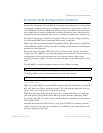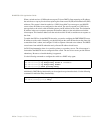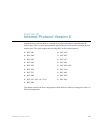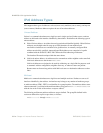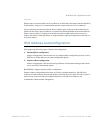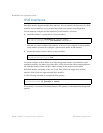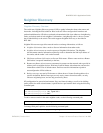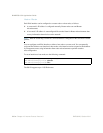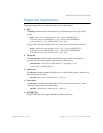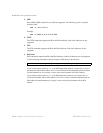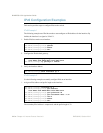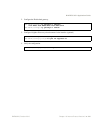
BLADEOS 6.5.2 Application Guide
BMD00220, October 2010 Chapter 16: Internet Protocol Version 6 235
Neighbor Discovery
Neighbor Discovery Overview
The switch uses Neighbor Discovery protocol (ND) to gather information about other router and
host nodes, including the IPv6 addresses. Host nodes use ND to configure their interfaces and
perform health detection. ND allows each node to determine the link-layer addresses of neighboring
nodes, and to keep track of each neighbor’s information. A neighboring node is a host or a router
that is linked directly to the switch. The switch supports Neighbor Discovery as described in
RFC 4861.
Neighbor Discover messages allow network nodes to exchange information, as follows:
Neighbor Solicitations allow a node to discover information about other nodes.
Neighbor Advertisements are sent in response to Neighbor Solicitations. The Neighbor
Advertisement contains information required by nodes to determine the link-layer address of
the sender, and the sender’s role on the network.
IPv6 hosts use Router Solicitations to discover IPv6 routers. When a router receives a Router
Solicitation, it responds immediately to the host.
Routers uses Router Advertisements to announce its presence on the network, and to provide its
address prefix to neighbor devices. IPv6 hosts listen for Router Advertisements, and uses the
information to build a list of default routers. Each host uses this information to perform
autoconfiguration of IPv6 addresses.
Redirect messages are sent by IPv6 routers to inform hosts of a better first-hop address for a
specific destination. Redirect messages are only sent by routers for unicast traffic, are only
unicast to originating hosts, and are only processed by hosts.
ND configuration for general advertisements, flags, and interval settings, as well as for defining
prefix profiles for router advertisements, is performed on a per-interface basis using the following
command path:
To add or remove entries in the static neighbor cache, use the following command path:
To manage IPv6 prefix policies, use the following command path:
RS G8124(config)# interface ip <interface number>
RS G8124(config-ip-if)# [no] ipv6 nd ?
RS G8124(config-ip-if)# exit
RS G8124(config)# [no] ip neighbors ?
RS G8124(config)# [no] ip prefix-policy ?



